Mallow can soothe your throat and skin (and it also makes a nice salad)
NAME: MALLOW (Malva neglecta and M. parviflora)
DESCRIPTION
Mallow is an urban plant that’s widely regarded as a weed. It’s one of the most common wild plants found in vacant lots, disturbed soils and even cracks in the cement in an alley.
Mallow leaves are roundish in outline and are palmately divided into seven to 11 shallow lobes, with a margin of small teeth. Where the long leaf stem meets the base of the leaf blade, you’ll notice a red spot on the upper surface of the leaf. The leaves are alternate and almost hairless.
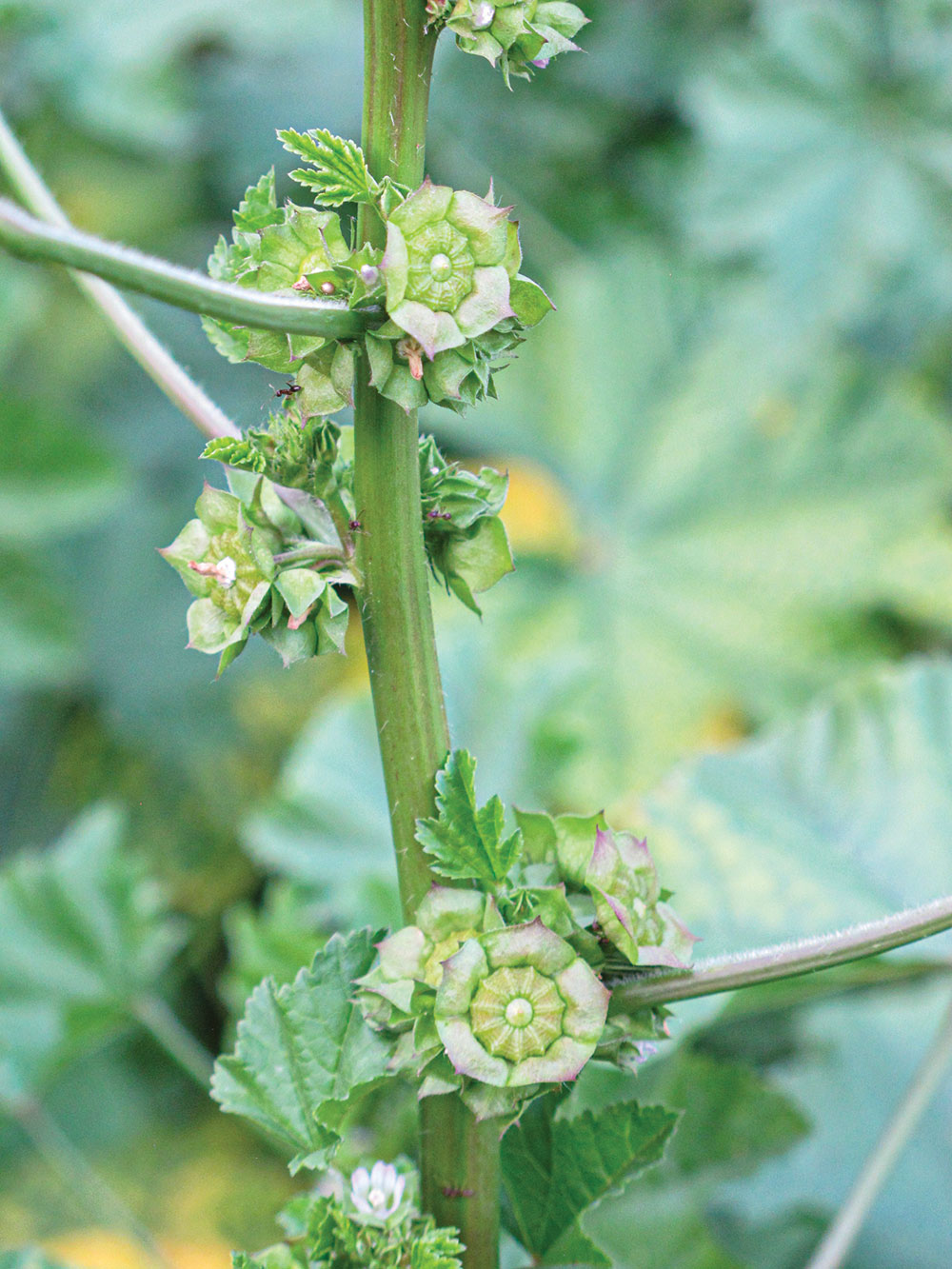
The flowers are arranged in close axillary clusters along the branches. The floral parts include five sepals, five rose-colored petals about 1/8 inch long, numerous stamens and one pistil. Flat, circular fruits develop from the flowers. When ripe, these ¼-inch green fruits split into up to a dozen nutlets that resemble packaged cheese; thus, its common name: cheeseweed.
WHERE FOUND
Mallow has naturalized here from Europe. It’s almost always found around the disturbed soils of urban areas and tends to be absent from wilderness areas. Look for this plant in vacant lots and waste areas.
Mallow is one of the most common urban wild plants. This spreading and highly branched annual grows to about 3 feet tall on average and is seen as mounds of green in open lots.
USES
Mallow leaves are edible raw in salads, and they impart a slightly mucilaginous texture. The leaves are commonly cooked and eaten like spinach; they can also be added to soup. Because they’re tough, I often remove the stems first, although they can be chopped fine and added to soups.
The large leaves of the mallow have sometimes been used as a replacement for grape leaves in the popular Middle Eastern “stuffed grape leaf,” which is rice and meat rolled into a grape leaf. You can also try sautéing the individual leaf, making it a “mallow chip.”
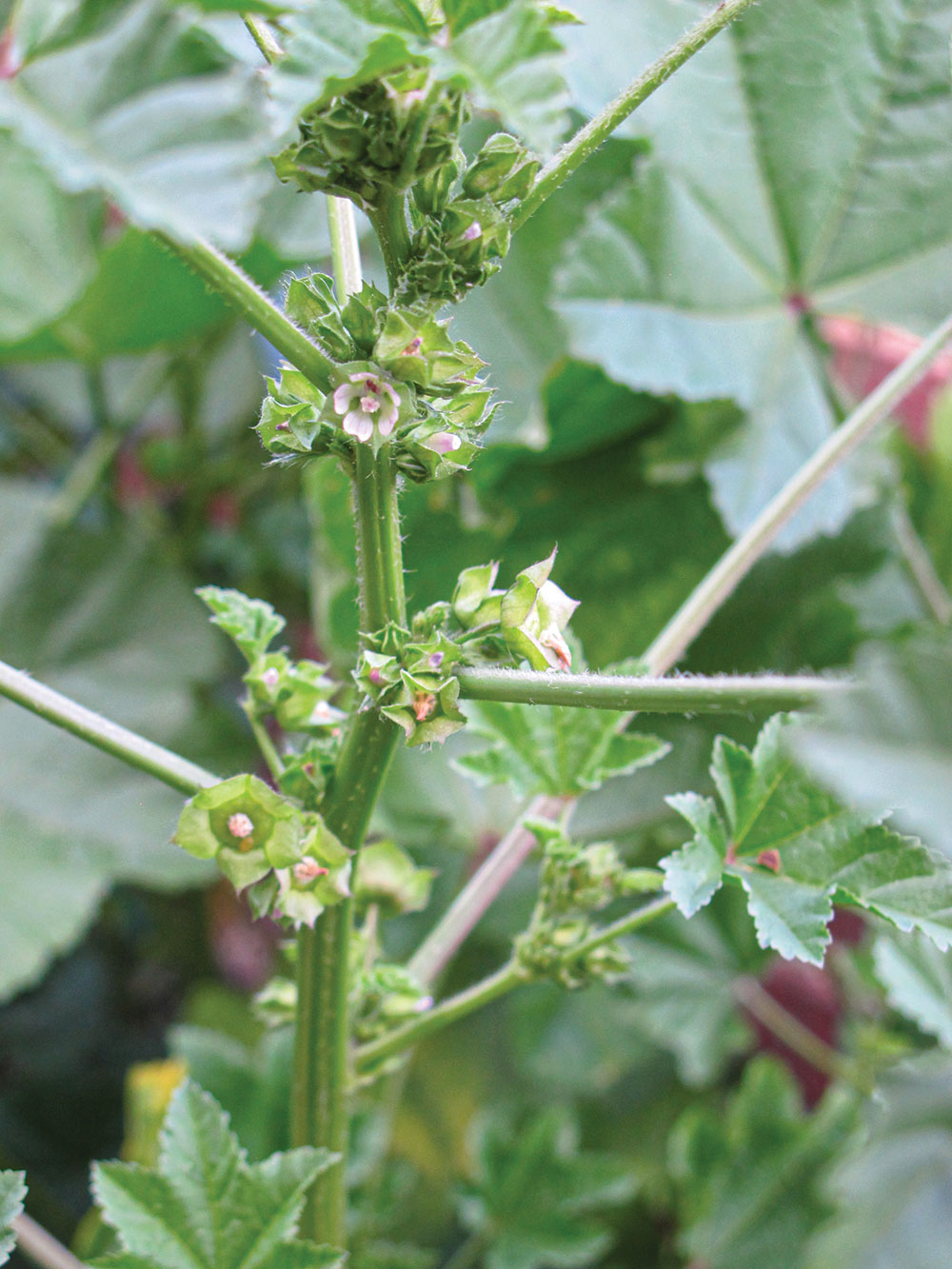
The raw, round fruits can be eaten as is while still green and have a nutty flavor. The mature fruits can be gathered and dried. The seeds can be separated from the chaff and other debris by winnowing the plant with a soft breeze. The seeds can then be simmered in water. They swell up slightly and can be seasoned and eaten like rice.
PROCESSING
Mallow leaves require minimal processing—just wash them and remove the fibrous stems.
The mature seed wheels should be collected and placed into a large salad bowl. Rub the dry seeds between your hands to remove the outer chaff and then lightly winnow them in a breeze to get just the seed.
WHEN TO HARVEST/AVAILABILITY
Although mallow is best gathered from midwinter to summer (when the leaves are young and large), the smaller leaves that appear as the plant goes to seed can also be used.
MEDICINE/NUTRITION
Herbalists use this mucilaginous herb as a demulcent (to reduce swelling or irritation) and an emollient (to soften or smooth skin). In addition, an infusion of mallow leaves is used for coughs. In Mexico, the raw leaves are chewed to alleviate minor sore throats. The leaves were used externally by Native Americans as a poultice on sores and swellings.
According to the USDA, 100 grams (½ cup) of mallow leaves contains 249 milligrams of calcium, 69 milligrams of phosphorus, 2,190 international units of vitamin A and 35 milligrams of vitamin C (an analysis of the same volume of mallow leaves by Duke and Atchley showed 90 milligrams of calcium, 42 milligrams of phosphorus, 410 milligrams of potassium and 24 milligrams of vitamin C. This second analysis also revealed 3,315 micrograms of beta carotene).
ADVICE FOR GROWING
Mallow is easiest to grow from seed. Once established, the plant drops many seeds and will continue to grow year after year in the same patch.
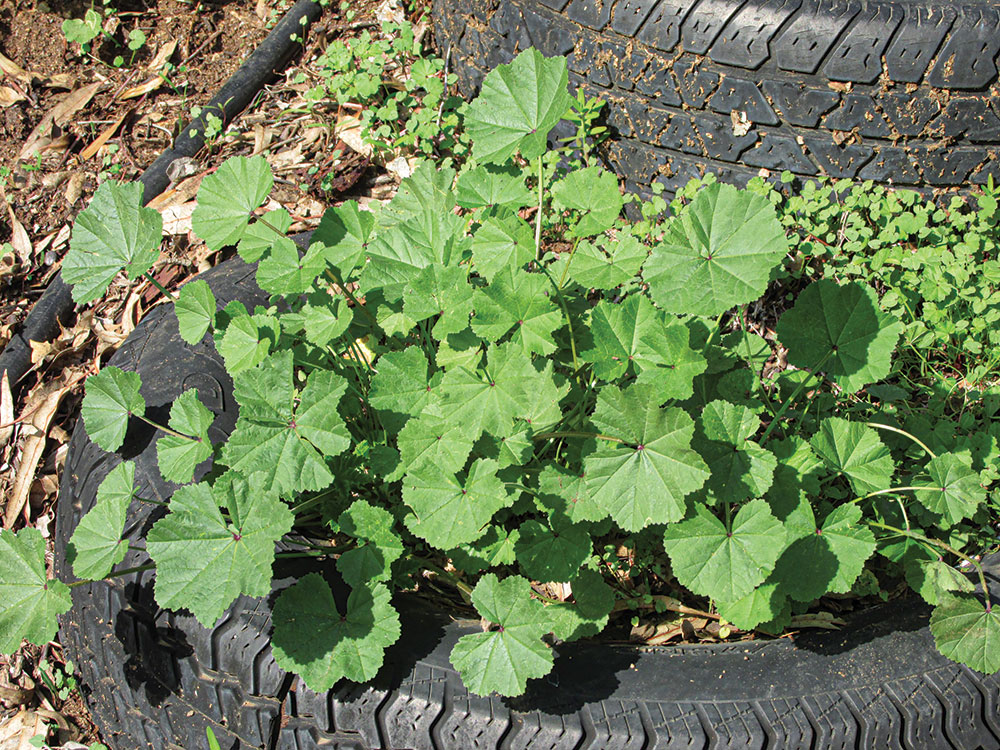
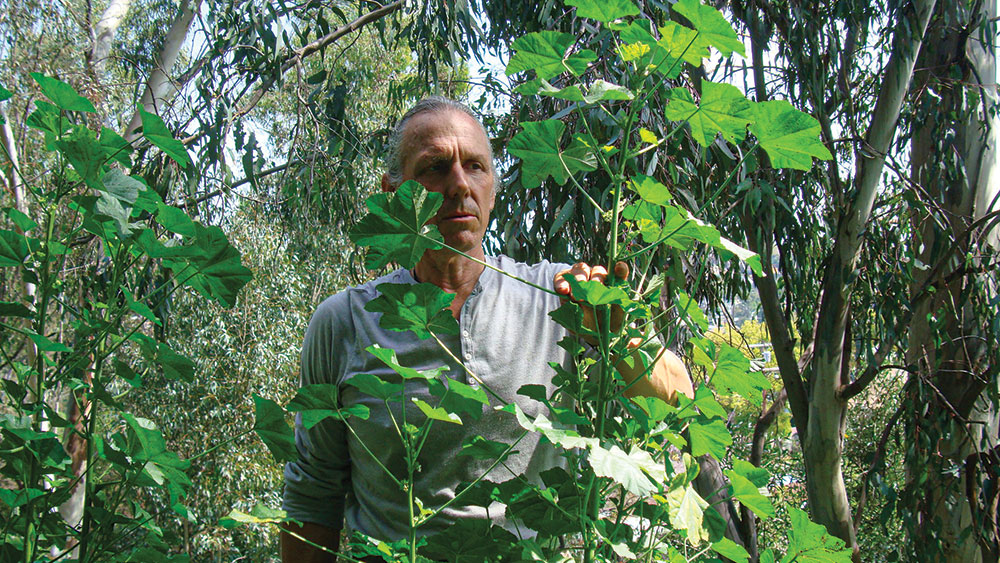

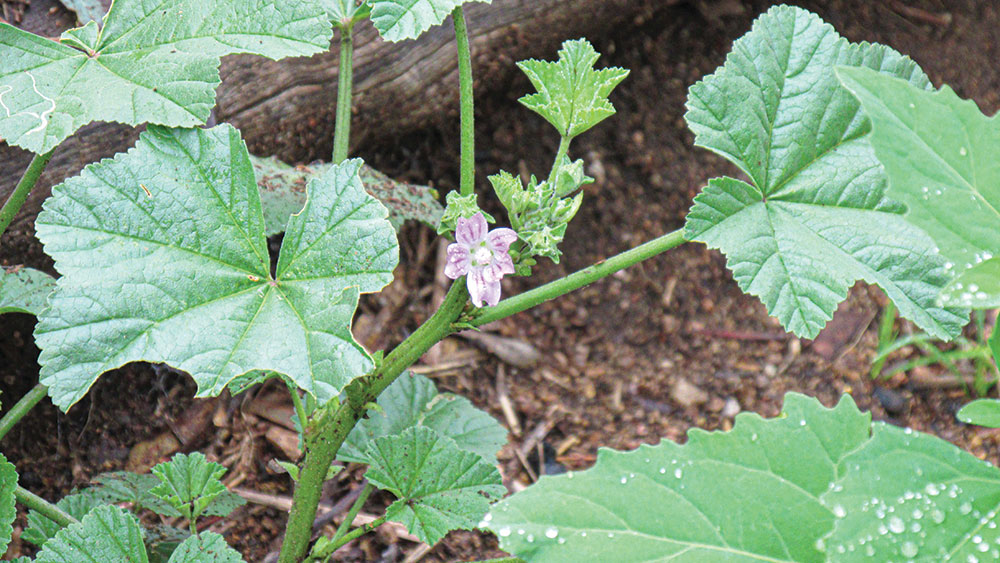
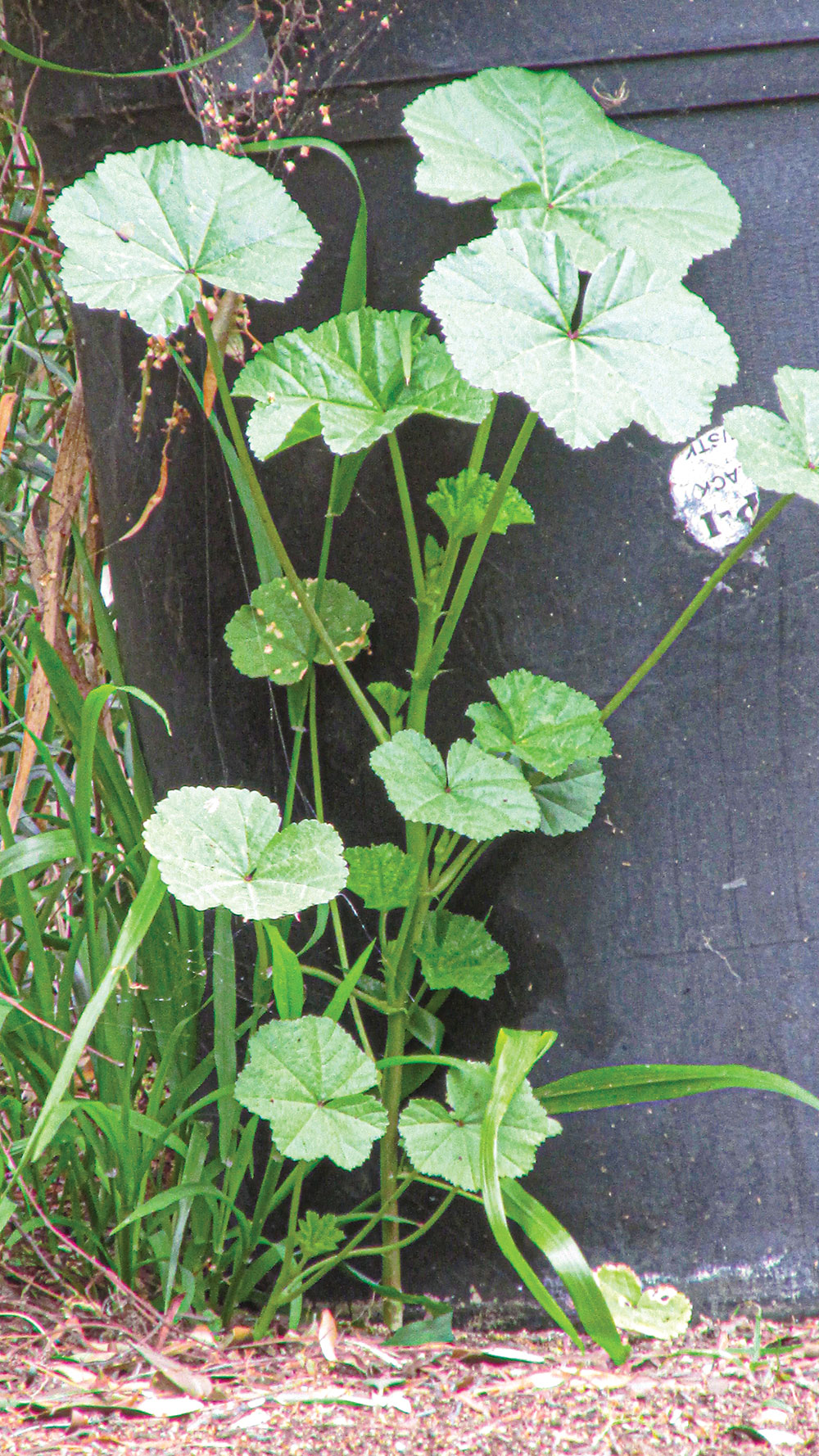
HISTORY
Mallow is related to the marsh mallow (Althea officinalis), the root of which would be boiled to yield a slimy juice. This was whipped into a froth and made into an ages-old medicine for sore throats, bronchial troubles and coughs. Today, marshmallows (the candy) have no marsh mallow root extract; rather, they’re made of eggs, sugar and other ingredients.
Common mallow root (Malva parviflora) won’t yield as thick and slimy a juice when boiled, but the green fruits (and the roots) can be boiled and the water beaten for an inferior substitute.
CAUTIONS
There are no poisonous malvas. Mallow greens are safe to eat in normal amounts.
RECIPE
Mallow Potatoes
- 5 cups mallow leaves, torn or cut into bite-sized pieces
- 2 large, boiled potatoes
- ½ pint sour cream
- Dill weed (to taste)
Boil the potatoes until tender. Steam the mallow until tender. It’s easier to cook them separately, because the potatoes will take longer to cook. Dice the potatoes and blend them in a serving dish with the mallow greens. Mix in the sour cream and top with the dill before serving. This dish is best served warm. Serves two or three.
About AoG’s Plant Advisor
Christopher Nyerges has been teaching ethnobotany since 1974. He’s the author of Guide to Wild Foods and Useful Plants, Foraging Wild Edible Plants of North America and other books about the uses of wild plants. He can be reached at
www.SchoolofSelf-Reliance.com.

